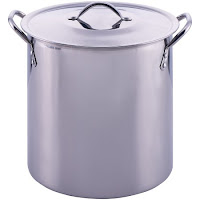"Sushi" for Breakfast?

Here is a neat recipe for breakfast "sushi". This is fairly healthy, and a lot of fun. All the food groups are represented (peanut butter provides protein). You can have this for breakfast, lunch or as a desert. There is no fish in this sushi. To make a "sushi" roll, peel a banana, smear it in creamy peanut butter, roll it in Rice Krispies, and cut it into short pieces. To make nigiri style "sushi", cut your banana at an angle to make the "fish". Then take a glob of peanut butter (about 1 Tbsp) and roll it around in Rice Krispies. Pat it into a brick shape and put the banana slice on top. For "wasabi" use key lime pie flavor yogurt. For the "ginger", use a vegetable peeler to make thin slices of carrot. Then cut the slices into pieces about 1.5" long. Make a little pile on the plate. You can use these to "cleanse the palate" between pieces of "sushi". If serving this as a dese...





